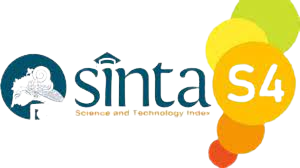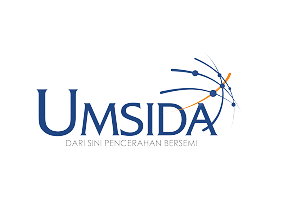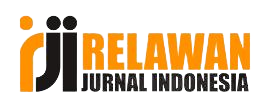Implementation of The Policy of The Minister of Health of The Republic of Indonesia Concerning The Health Protocol for The Community in Place and Public Facilities to Press The Spread of Covid-19 in The Sidoarjo Area
Implementasi Kebijakan Menteri Kesehatan Republik Indonesia Tentang Protokol Kesehatan Bagi Masyarakat di Tempat dan Fasilitas Umum Untuk Menekan Penyebaran Covid-19 di Wilayah Sidoarjo
DOI:
https://doi.org/10.21070/jkmp.v9i1.1554Keywords:
Implementation, Health Protocol, Covid-19Abstract
The number of positive COVID-19 patients in the Sidoarjo area continues to increase. As of April 19, 2020, there were 11,028 positive COVID-19 patients, 6,068 suspect patients, 617 patients who were declared dead due to Covid-19 and 10,398 people declared cured of Covid-19. This study was conducted to identify and describe the implementation of policies in the form of the Decree of the Minister of Health of the Republic of Indonesia Number HK. 01.07/Menkes/382/2020 concerning Protocols for Public Health in Public Places and Facilities in the Context of Prevention and Control of Corona Virus Disease 2019 (Covid-19) in the Sidoarjo area. Data analysis was carried out by Miles and Huberman interactive analysis. The results showed that the implementation of the Decree of the Minister of Health of the Republic of Indonesia Number HK. 01.07/Menkes/382/2020 concerning Protocols for Public Health in Public Places and Facilities in the Context of Prevention and Control of Corona Virus Disease 2019 (Covid-19) in the Sidoarjo region can be seen from four things. First, communication, where policy communication is carried out through socialization and education related to 3M (wearing masks, maintaining distance and washing hands) to the people of Sidoarjo. However, in practice, socialization and education related to 3M (wearing masks, maintaining distance and washing hands) are considered insufficient to overcome the Covid-19 pandemic. Need to add 2M (limit mobility and stay away from crowds) so that it becomes 5M. This is because mobility and crowd problems are felt to have contributed to causing many Covid-19 virus infections. Second, resources, where the task of fixing the level of compliance with health protocols actually requires the help of many parties. Not only from themselves, the media is also tasked with providing a sense of security and positive messages to the community. Likewise, the government should also not instill too much fear, but rather recommendations that arouse the desire to comply with health protocols.
References
Anggara, S. (2014). Kebijakan Publik. CV Pustaka Setia.
Hamdi, M. (2014). Kebijakan Publik: Proses, Analisis dan Partisipasi. Ghalia Indonesia.
Masrul, Abdillah, L. A., Tasnim, Simarmata, J., Daud, Sulaiman, O. K., Prianto, C., Iqba, M., Purnomo, A., & All, E. (2020). Pandemik COVID-19: Persoalan dan Refleksi di Indonesia. Yayasan Kita Menulis.
Miles, M. B., & Huberman, A. M. (2014). Qualitative Data Analysis, A Methods Sourcebook Edition 3. Sage Publications.
Sinuhaji, J. (2021). Update, Kasus Virus Corona Indonesia per 18 April 2021, Positif Tembus 1,6 Juta, Meninggal 43.424. Pikiran Rakyat@com. https://www.pikiran-rakyat.com/nasional/pr-011791680/update-kasus-virus-corona-indonesia-per-18-april-2021-positif-tembus-16-juta-meninggal-43424
Solichin, A. W. (2012). Analisis Kebijakan Dari Formulasi ke Penyusunan Model-Model Implementasi Kebijakan Publik. PT Bumi Aksara.
Waseso, H. P., & Hidayat, M. S. (2016). Mengaplikasikan kurikulum berbasis KKNI : pengalaman di prodi PGMI UNSIQ jawa tengah/ Hendri Purbo Waseso, Muhtar Sofwan Hidayat Mengaplikasikan kurikulum berbasis KKNI : pengalaman di prodi PGMI UNSIQ jawa tengah/ Hendri Purbo Waseso, Muhtar Sofwan Hiday. Wonosobo: Mangku Bumi.
















